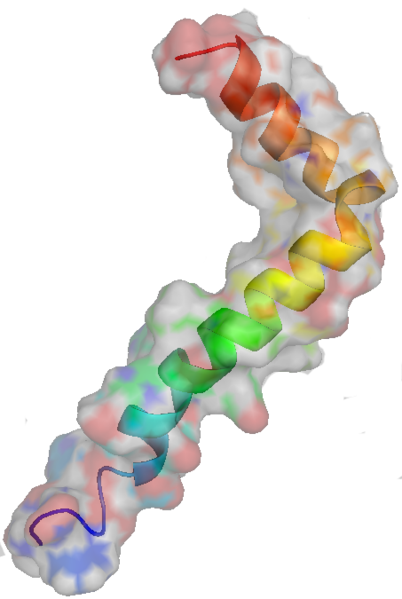Genetics
Scientists have discovered two types of genes involved in the development of Alzheimer's disease, risk genes and deterministic genes.
Risk Genes
Risk genes increase the probability of developing Alzheimer's disease; they do not guarantee its development.
- Apoliprotein E (ApoE) gene:
The most prominent risk gene is a member of the ApoE (apoliprotein E) family and is found on chromosome 19. ApoE is essential for the breakdown of lipids.
There are three types of ApoE genes; ApoE-e2, ApoE-e3 and ApoE-e4. ApoE-e4 is considered a risk gene for Alzheimer's disease, whilst ApoE-e2 is thought to offer protection from Alzheimer's Disease (Saunders, 2000).

Scientists are currently unsure why ApoE-e4 is a major risk factor in developing this disease. However, it is thought that apoliprotein E catalyses the breakdown of beta-amyloid, and that each type of the apoliprotein has a different efficiency to do this (Jiang et al, 2008). ApoE-e4 having the lowest efficiency, therefore leading to a build up of beta-amyloid in the brain and the formation of amyloid plaques.
- SORL1 gene:
Discovered in 2007, SORL1 is a receptor for apoliprotein E and it is considered a risk gene for Alzheimer's Disease. Low levels or mutant forms of SORL1 have been proven to increase beta-amyloid protein, leading to the formation of amyloid plaques.
Deterministic Genes
Deterministic genes are genes that when mutated guarantee the development of a gene.
Three deterministic genes have been discovered in the development of Alzheimer's disease. These deterministic genes code for amyloid precursor protein (APP), presenilin-1 (PSEN-1) and presenilin-2 (PSEN-2), mutations in these genes lead to early onset Alzheimer's disease.
- Amyloid precursor protein (APP) gene:
The APP gene codes for APP, which is a integral membrane protein found primarily in neurons. When APP undergoes proteolysis it forms beta-amyloid protein. High levels of mutant APP has been proven to cause Alzheimer's Disease.
- PSEN1 and PSEN2 genes:
PSEN1 gene is located on chromosome 14, and codes for presenilin 1 (PS-1). Whilst, PSEN2 gene is located on chromosome 1, and codes for presenilin 2 (PS-2). Presenilin is a component of gamma secretase that is responsible for cutting APP. Beta-amyloid formed by the cutting of APP, is at most risk of causing Alzheimer's Disease when it is cut to a length of 42 amino acids, as it is more likely to aggregate. A mutatant form of PS-1 and PS-2 leads to an increase in beta-amyloid 42.
